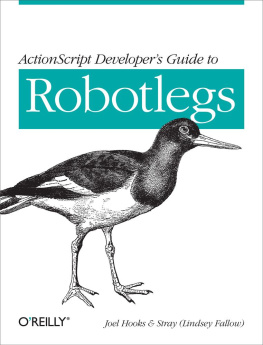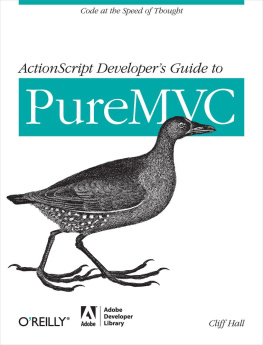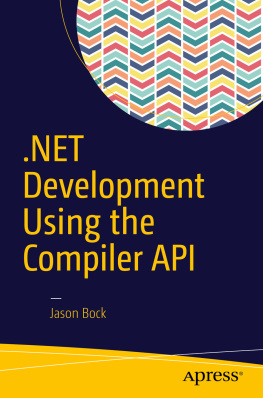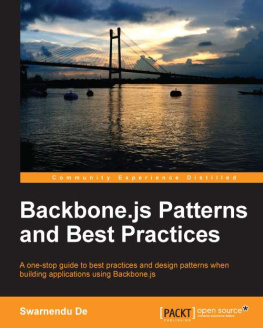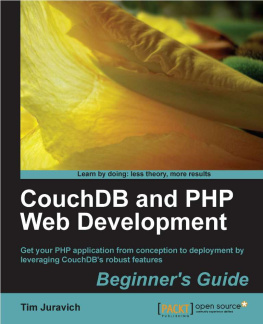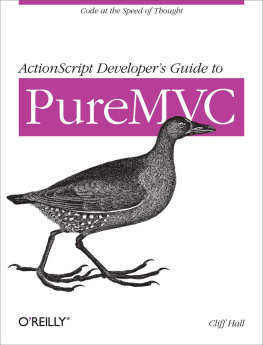Robotlegs: Something a little bit special
In April 2009, Shaun Smith posted the following on his blog:
Want a framework like PureMVC but without Singletons, Service Locators, or casting? Perhaps one with Dependency Injection and Automatic Mediator Registration?
Well, you might enjoy RobotLegs AS3: yet another lightweight micro-architecture for Rich Internet Applications.
Its got the bits that I like about PureMVC (Mediators, Commands and Proxies) without any of the bits that Im not so fond of (Service Locator, Singletons, casting casting casting!)
Over the following six months, Shauns Robotlegs concept gradually picked up support, gathered momentum, and through the collective efforts of a group of people who had never met in person, Robotlegs 1.0 was born.
Open source development is well understood in our community. But we shouldnt take it for granted. I (Stray) was working on some of the diagrams for the book on a flight back from the first ever Robotlegs team meet-up, and the man next to me started asking questions about what I was doing. When I told him I was working on a book about a project that was the collective effort of strangers from all over the world, none of whom expected to be paid, he was amazed.
Robotlegs has brought coding-joy to thousands of AS3 developers. There is something about using Robotlegs that not only solves our immediate coding problems but gives us insight into our architecture on a much deeper level. Joel and I each have many, many experiences of people sharing with us how Robotlegs has clarified concepts that were previously confusing to them. After only a short time using Robotlegs, developers tell us that they have become better programmers and architects generally.
The most rewarding part of being involved with Robotlegs has been witnessing people grow as programmers to the point where they become contributors of utilities and patches for the framework. Robotlegs owes its success not just to Shaun, Till, Robert and Joel, but to the dozens of people who got involved in the early discussions, the scores who have built utilities and extensions, the hundreds of early-adopters who have written tutorials and shared their enthusiasm with others, and the thousands of users who have put their trust in the framework and given Robotlegs a shot.
Shaun could never have dreamed that his little framework idea would grow and grow until OReilly commissioned a book about it. We hope this book does justice to Robotlegs, and the collective energy that has brought it into our world.
Who this book is for
ActionScript Developers Guide to Robotlegs is for Flash, Flex and AIR application developers interested in using, or already using, the Robotlegs AS3 framework. It demonstrates and explains the core functionality of the Robotlegs framework and also explores the deeper issues in AS3 architecture generally and how developers can solve those problems in clean and flexible ways using Robotlegs.
This book also covers testing (TDD) of Robotlegs applications, and the rich example applications come with extensive tests.
Who this book is not for
This book is not for developers who are brand new to object-oriented programming. It assumes some understanding of classes, interfaces and inheritance as implemented in AS3. It is not a quick reference guide to the Robotlegs API.
Conventions used in this book
The following typographical conventions are used in this book:
Italic
Indicates new terms, URLs, email addresses, filenames, and file extensions.
Constant widthUsed for program listings, as well as within paragraphs to refer to program elements such as variable or function names, databases, data types, environment variables, statements, and keywords.
Constant width boldShows commands or other text that should be typed literally by the user.
Constant width italicShows text that should be replaced with user-supplied values or by values determined by context.
Tip
This icon signifies a tip, suggestion, or general note.
Caution
This icon indicates a warning or caution.
Using code examples
This book is here to help you get your job done. In general, you may use the code in this book in your programs and documentation. You do not need to contact us for permission unless youre reproducing a significant portion of the code. For example, writing a program that uses several chunks of code from this book does not require permission. Selling or distributing a CD-ROM of examples from OReilly books does require permission. Answering a question by citing this book and quoting example code does not require permission. Incorporating a significant amount of example code from this book into your products documentation does require permission.
We appreciate, but do not require, attribution. An attribution usually includes the title, author, publisher, and ISBN. For example: ActionScript Developers Guide to Robotlegs by Joel Hooks and Stray (Lindsey Fallow) (OReilly). Copyright 2011 Newloop Ltd. and Visual Empathy LLC, 978-1-449-30890-2.
If you feel your use of code examples falls outside fair use or the permission given above, feel free to contact us at .
Safari Books Online
Note
Safari Books Online is an on-demand digital library that lets you easily search over 7,500 technology and creative reference books and videos to find the answers you need quickly.
With a subscription, you can read any page and watch any video from our library online. Read books on your cell phone and mobile devices. Access new titles before they are available for print, and get exclusive access to manuscripts in development and post feedback for the authors. Copy and paste code samples, organize your favorites, download chapters, bookmark key sections, create notes, print out pages, and benefit from tons of other time-saving features.
OReilly Media has uploaded this book to the Safari Books Online service. To have full digital access to this book and others on similar topics from OReilly and other publishers, sign up for free at http://my.safaribooksonline.com.
How to contact us



